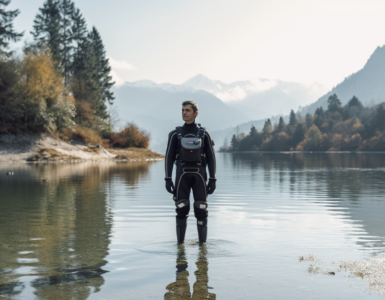Imagine the feeling of wind rushing past your face as you hold the helm of a sailboat, steering it through the open sea under a clear, blue sky. This could be your first sailing experience, a combination of thrill and tranquility. Gaining sailing experience is not only exciting but also enriching. It enhances your physical strength, resilience, and adaptability. This blog will guide you through the process of gaining sailing experience, from understanding the basics of sailing to finally steering your own sailing adventure.
The Basics of Sailing
Let’s start with the basics. Sailing is not just about steering a boat; it is a blend of science, art, and experience. The boat itself is an intricate structure, with different parts like the hull, mast, and rudder, each playing a vital role. Familiarizing yourself with these parts is fundamental to understanding how a sailboat functions.
Then comes the nautical terminology. Ever heard of terms like ‘port’, ‘starboard’, ‘bow’, and ‘stern’? These are just a few examples of the language used in sailing. Knowing these terms will not only help you communicate effectively while sailing but also deepen your understanding of the sport.
Finally, understanding how a sail works is crucial. It’s not just a piece of fabric catching the wind; it’s a scientifically designed structure that propels the boat forward. It’s fascinating, isn’t it?
Beginning on Dry Land
Now, you might be thinking, “Can I start learning to sail right away, on the water?” Well, you could, but starting on dry land has its advantages. Enrolling in a sailing class or course can provide a solid foundation before you set foot on a boat. These courses typically cover sailing theory, teaching you about wind dynamics, navigation, and safety measures, among other things. This knowledge gives you a head start when you finally get on the water.
Moreover, learning on land allows you to make mistakes and learn from them in a safe environment. Remember, it’s okay to make mistakes. They are stepping stones on your path to becoming a skilled sailor.
The Role of Sailing Courses
Ever wondered why sailing courses are so crucial in your journey to becoming a seasoned sailor? Well, let’s ponder on that. Sailing courses are the backbone of your sailing endeavors. They provide the theoretical knowledge and practical skills you need to navigate the waters confidently and safely. These courses come in different shapes and sizes, catering to every level of sailor, from absolute beginners to experienced seafarers seeking to hone their skills.
Whether you prefer online courses that offer flexibility and convenience or traditional in-person courses for hands-on experience, there’s something for everyone. Rest assured, these courses are designed to provide comprehensive training that covers everything from basic sailing terminology to advanced navigation techniques.
Choosing the Right Sailing Course
So, how do you decide which sailing course is right for you? It’s all about aligning the course with your personal needs and sailing goals. Consider factors such as the level of instruction, the course duration, and the skills you intend to acquire.
When looking at a course syllabus, pay attention to the topics covered. Does it start with the basics and gradually move to more complex areas? Does it include practical sessions? Remember that a good sailing course should provide a balanced mix of theory and hands-on experience. It’s not just about learning the ropes; it’s about learning to sail.
Costs and Commitment
Let’s talk about the investment. Sailing courses do require a financial commitment, with costs varying depending on the course level, duration, and the institution offering it. But consider this as an investment in your skillset, safety, and future sailing adventures. Spending money to learn proper sailing techniques and safety procedures now can save you from costly mistakes down the road.
Time commitment is another important aspect to consider. Some courses are intensive, requiring several hours a day for a few weeks, while others may be spread out over several months. Make sure to choose a course that fits your schedule and learning pace.
Gaining Practical Experience
While sailing courses provide the foundation, nothing beats the value of practical, hands-on sailing experience. It’s the real deal. It’s where you get to apply what you’ve learned in class in a real-world setting. But how do you gain this invaluable experience?
- Rent a boat: Renting a boat allows you to practice sailing at your own pace. It’s a great option if you want to spend some quality time honing your sailing skills.
- Join a sailing club: Sailing clubs provide excellent opportunities to sail regularly and learn from more experienced members. Plus, they often organize events and competitions that can boost your sailing experience.
- Volunteer at a marina: Volunteering at a marina can expose you to various types of boats and sailing scenarios. It’s also a great way to network with other sailing enthusiasts and professionals.
Remember, the goal is to gain as much experience as possible. The more you sail, the more comfortable you’ll become, and the more your confidence will grow. So, are you ready to set sail?
Learning from Experts
Have you ever wondered why the world’s top athletes have coaches? It’s because no matter how skilled you are, there’s always room for improvement. And who better to guide you towards that improvement than someone who’s been there, done that? The same applies to sailing. Having a mentor or coach can significantly boost your sailing skills and confidence.
A mentor can provide you with invaluable insights and tips that you might not find in books or online courses. They can correct your mistakes, challenge you, and help you understand the nuances of sailing. But how do you find a mentor? Start by attending sailing events and making connections. Don’t be shy about asking experienced sailors for advice. Most sailors are passionate about their sport and willing to help newcomers.
Joining Sailing Clubs and Associations
Another excellent way to further your sailing skills is by joining sailing clubs and associations. Not only do these organizations provide opportunities to sail, but they also offer a chance to connect with like-minded individuals. Networking can lead to friendships, mentorships, and even opportunities to join sailing crews.
Many sailing clubs and associations also offer advanced training and workshops. Participating in these events can not only improve your sailing skills but also keep you updated with the latest sailing trends and techniques.
Participating in Regattas and Races
What’s more exciting than putting your sailing skills to the test? Participating in regattas and races is not only thrilling but also a fantastic way to enhance your sailing experience. It forces you to apply what you’ve learned in real-world, high-pressure situations.
There are numerous types of sailing competitions, from friendly club races to international championships. These races can vary in terms of the type of boats used, the course layout, and the rules. Participating in these events can be challenging, but it’s also incredibly rewarding. So, are you ready to feel the adrenaline rush?
| Sailing Competition | Location | Time of Year |
|---|---|---|
| The America’s Cup | Varying | Every four years |
| Vendée Globe | Starts and ends in Les Sables d’Olonne, France | Every four years in November |
| Volvo Ocean Race | Worldwide | Every three years |
| Fastnet Race | Starts in Cowes, UK | Every two years in August |
| Sydney to Hobart Yacht Race | Starts in Sydney, Australia | Annually, December 26 |
Safety First
When it comes to sailing, it’s not all about knowing your port from your starboard or mastering the art of tacking and jibing. As much as these are crucial, there’s a fundamental aspect that should never be overlooked – safety. Ever wondered why even the most seasoned sailors don a lifejacket? Or why they diligently check the weather before they set sail? It’s all about safety.
Understanding and adhering to safety protocols, procedures, and the proper use of equipment can literally be a lifesaver in the unpredictable world of sailing. These could range from knowing how to operate a VHF radio, understanding distress signals, to effective man overboard recovery techniques. How about learning to tie essential sailing knots? That’s right, it’s not just for show. These knots have practical applications in ensuring the safety of your sailing voyage.
Continuous Learning and Advancement
Alright, so you’ve taken the beginner’s course, you’ve got your hands on the tiller, and you’ve successfully navigated a few nautical miles. What next? Well, the world of sailing is vast, and there’s always room for improvement and advancement.
You can consider taking advanced sailing courses that focus on specific areas such as navigation, meteorology, or even yacht maintenance. And guess what? It doesn’t stop there. You can keep expanding your knowledge through books, instructional videos, and even sailing simulations! Yes, technology has made it possible to practice sailing without getting your feet wet. How cool is that?
Remember, the goal isn’t just to become a better sailor, but a safer, more knowledgeable, and confident one. So, are you ready to hoist the sails and catch the wind?
From Novice to Captain
It’s been quite a journey, hasn’t it? From understanding the basics to gaining practical experience, from learning from experts to continuous learning and advancement, you’ve been through it all. And now, you stand on the brink of becoming not just a sailor, but a captain of your own sailing adventure. Isn’t that exciting?
Remember, every sailor’s journey is unique, and it’s important to respect your own pace and process. The most important thing is to enjoy the journey, to feel the wind in your hair, the spray of the sea on your face, and the thrill of steering your boat towards the horizon. After all, isn’t that what sailing is all about?
As we conclude, here’s a list of resources for further learning and sailing advancement:
- Books: “The Annapolis Book of Seamanship” by John Rousmaniere, “Sailing For Dummies” by J.J and Peter Isler
- Online Courses: NauticEd, American Sailing Association (ASA) Online Courses
- YouTube Channels: Sailing Britaly, Sailing SV Delos, Sailing Uma
- Sailing Simulations: Sailaway – The Sailing Simulator, Virtual Regatta




